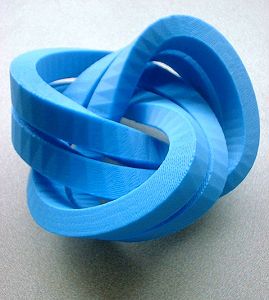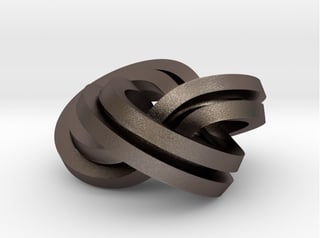I apologize in advance for my rudimentary knowledge of knot theory, but I've been trying to find out about the significance (if any) of taking a knot (particularly a torus knot), cutting it, and forming another knot using it. Some examples:
trefoil knot of a trefoil knot
and another "double trefoil" knot
Is there a generally accepted name for this? Is the resulting knot prime? Are there any other generalizations one can make about these?
Thank you for any information you have on this.


